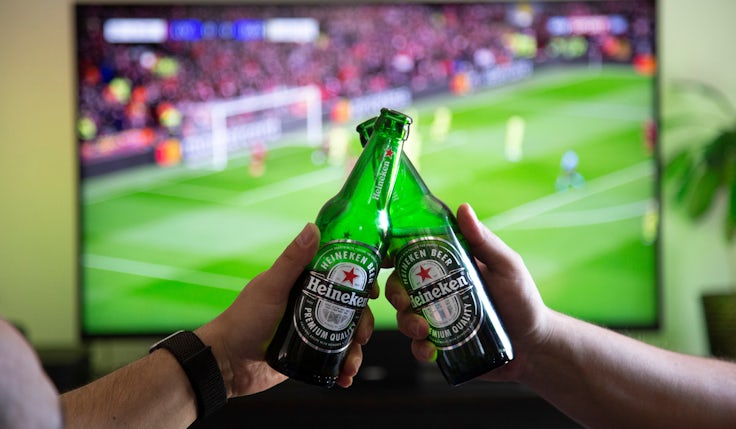Heineken doubles down on premiumisation strategy as volumes grow
Last year also saw Heineken boost its marketing spend above pre-pandemic levels, with the brewer claiming to get more out of this investment than ever before.
 Heineken’s volumes returned to pre-pandemic levels in 2022, with premium sales outperforming the rest of the portfolio.
Heineken’s volumes returned to pre-pandemic levels in 2022, with premium sales outperforming the rest of the portfolio.
Volumes rose 6.9% compared to 2021 across the company’s beer brands, including Amstel, Birra Moretti and its flagship Heineken brand. The brewer also reported organic net revenue growth of 21.9% to €28.3m (£25.5m), crediting inflation-driven price increases and its premiumisation efforts for the boost.
Premium beer volumes grew 11.4% last year. CEO Dolf van den Brink told investors on a call today (15 February) that the premium portfolio continued to “outperform” the rest of the business, accounting for more than half of Heineken’s total beer volume growth.
The business is planning to further restructure its portfolio towards the premium end of the market and said it was “very happy” to see growth in the segment over the year, with Van den Brink stating that “not every hectolitre is equal”.
The growing premium portfolio is led by the “excellent momentum” of the Heineken brand. Heineken saw volume sales increase by 12.5%, boosted by the performance of its line extensions – notably Heineken Silver, which more than doubled its volume sales as it was rolled out across new markets globally.
We really want to make sure that we earn pricing power through brand power.
Dolf van den Brink, Heineken
The business also saw strong growth in its international premium beers. In the UK, Birra Moretti became the market leader of the premium beer segment by value and saw 2022 volumes which were more than double 2019 levels.
Amstel also saw strong growth globally in 2022, with volumes growing in the mid-twenties. The company highlighted the performance of low-calorie line extension Amstel Ultra in particular.
Heineken has been on a mission to “premiumise at scale” and build a “leadership” position both in its ‘beyond beer’ brands and the no and low-alcohol category.
In its products beyond beer, the company highlighted the successful rollout of Strongbow Ultra. This low-calorie version of the cider was launched in 2022 to “renovate” the brand. In the UK, the Strongbow Ultra Dark Fruit product now equates to around 70% of the hard seltzer market, the business claimed.
Speaking to Marketing Week last year, Heineken’s UK marketing director Michael Gillane said the hard seltzer category was “not yet moving the dial” in the UK, predicting that Strongbow Ultra Dark Fruit would be a low-calorie drink much more suited to the British market due to its familiarity with cider as a product.
The launch of the Ultra Dark Fruit product saw Heineken invest in a £12m marketing campaign which ran on TV, social media and video-on-demand channels.
Stepping up marketing spend
In 2022, Heineken’s marketing spend across all its brands was above pre-pandemic levels in absolute terms. The business’s marketing and selling expenses were up 22.4%, amounting to 9.5% of the company’s net revenue.
However, spend is still lower than 2019 as a percentage of revenue. Van den Brink says Heineken is now “getting more out of its euros”, with more than 70% of its spend in 2022 going towards consumer-facing marketing.
Some of this increased spend was invested behind campaigns such as the Heineken brand’s ‘Cheers to All Fans’, which addressed gender bias in football. Such initiatives helped Heineken to “share [its] brand DNA in a meaningful way to spark growth”, the company said.
Going into 2023, Heineken has committed to continued investment in its brands and upping its marketing spend, “whilst staying disciplined on pricing and costs”. Marketing investment must be made alongside price increases, the company said.
“We really want to make sure that we earn pricing power through brand power,” Van den Brink added.
The business expects operating profits to grow organically by mid- to high-single-digits in 2023, while volumes will grow modestly or remain stable. However, it expects volumes to fall in Europe this year, as a “challenging” macroeconomic environment hits consumer spending.







Comments